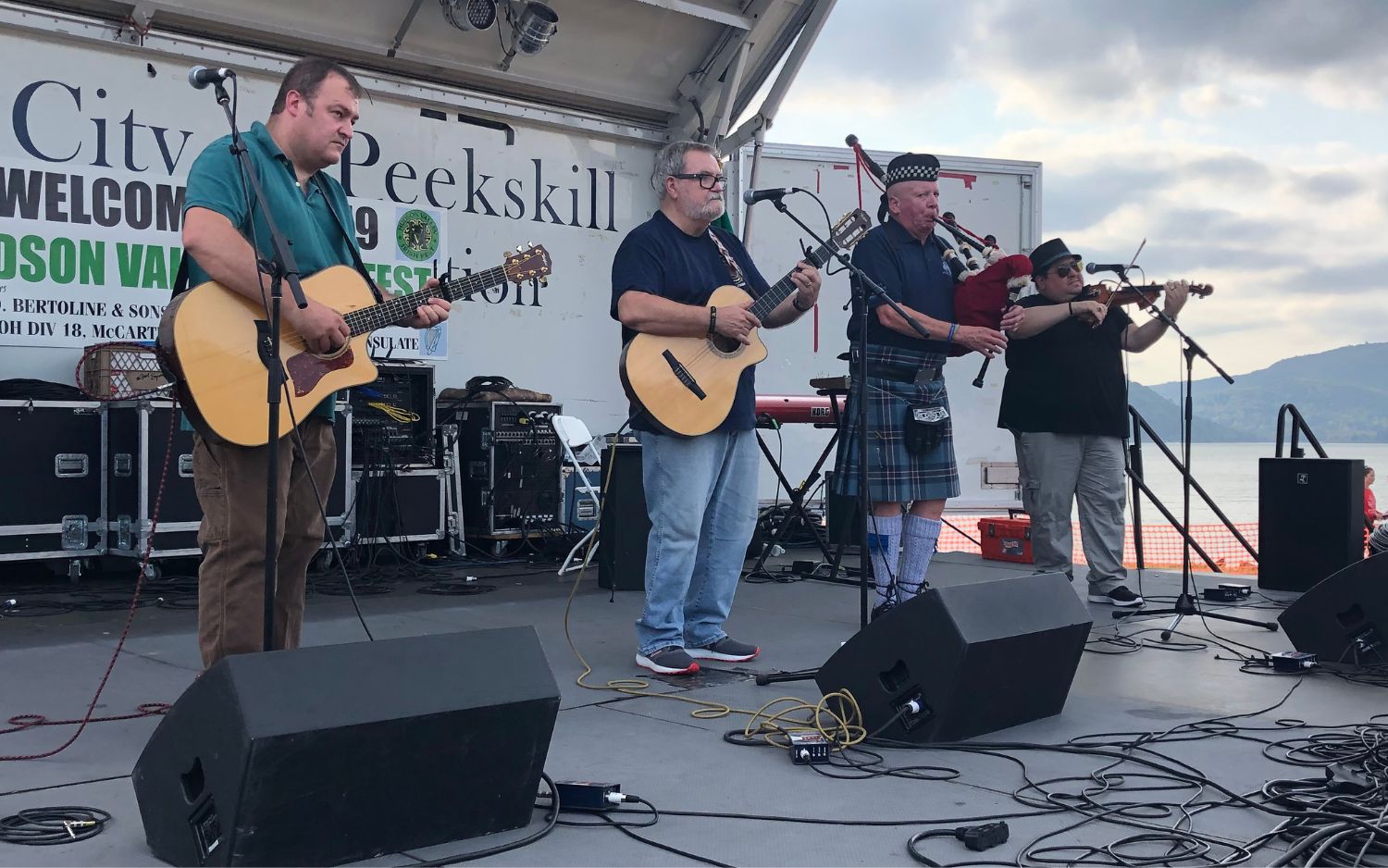Ireland's Minister for Tourism, Culture, Arts, Gaeltacht, Sport and Media, Catherine Martin TD, has announced formal State recognition of four additional practices as part of Ireland’s living cultural heritage.
At an event at Croke Park during the All-Ireland Senior Football Championship Semi-Final between Donegal and Galway on July 14, Minister Martin announced the recognition of Irish Set Dancing, Gaelic Football and Ladies’ Gaelic Football, Weaving of a St. Brigid’s Cross, and the Irish Amateur Dramatic Tradition.
Following recommendation from Ireland’s Expert Advisory Committee on Intangible Cultural Heritage, these four cultural practices will join 38 other cultural practices already recognized on Ireland’s National Inventory of Intangible Cultural Heritage.
Ireland maintains this National Inventory in line with the 2003 UNESCO Convention for the Safeguarding of Intangible Cultural Heritage, which Ireland ratified in 2015.
The aim of the National Inventory for Intangible Cultural Heritage is to protect, promote, and celebrate Irish living cultural heritage practices, customs, crafts, and traditions.
At an event at Croke Park yesterday Min @cathmartingreen announced the recognition of 4 additional practices as part of Ireland’s living cultural heritage: Gaelic Football & Ladies’ Gaelic Football, Set Dancing, St. Brigid’s Cross Weaving & the Irish Amateur Dramatic Tradition pic.twitter.com/febSplwFdh
— Tourism-Culture-Arts-Gaeltacht-Sport-Media (@DeptCultureIRL) July 15, 2024
Minister Martin said on Sunday: “Our living heritage is an integral part of our culture. I am pleased to announce state recognition of four further practices through Ireland’s National Inventory of Intangible Cultural Heritage.
"Each of these practices is integral to the culture and identity of the communities who practice them, and to our society more broadly.
"As part of my department’s ongoing obligations under the UNESCO 2003 Convention, we aim to acknowledge, safeguard, and promote Ireland’s cultural heritage. The practices recognized today continue to thrive through the dedicated communities who sustain and pass on their skills through the generations."
Today we give formal State recognition to the place of
?Gaelic Football and Ladies Gaelic Football
?Irish Amateur Dramatics
?Set Dancing
?St Brigid’s Cross weaving
as part of our living cultural heritageDelighted to make this announcement in @CrokePark pic.twitter.com/N0tpQ6pvdv
— Catherine Martin TD (@cathmartingreen) July 14, 2024
Read more
Irish Set Dancing
Terry Moylan of Brooks Academy commented: "Dancers throughout Ireland and in countries all over the world will be delighted at the news that Ireland has recognized Irish set-dancing as an invaluable part of our shared global heritage, and given explicit confirmation of this through its inscription on the National Inventory of Intangible Cultural Heritage."
View this post on Instagram
Gaelic Football and Ladies’ Gaelic Football
Jarlath Burns, Uachtarán Chumann Lúthchleas Gael, said: “We are extremely honoured to have Gaelic football formally added to Ireland’s list of intangible cultural heritage.
"Just as hurling and camogie were recognised by UNESCO in 2018, this recognition is important because Gaelic football and Ladies Gaelic football are an intrinsic part of who we are.
"They are unique to us and their importance to Irish people is evidenced by their popularity in more than 1,600 clubs throughout this island and the 500 GAA clubs which exist elsewhere in the world.
"We are enormously proud of the skills and artistry which have evolved in our national games over centuries, and we are delighted that Gaelic games have been recognised and supported by the Government, and thank Minister Catherine Martin and her colleagues for their continuing support.”
Helen O’Rourke, Ard-Stiúrthóir of the LGFA, said: “We are delighted to have Ladies’ Gaelic Football recognised on this list.
"This is a timely announcement as we get set to celebrate the 50th anniversary of the Ladies’ Gaelic Football Association next Thursday, July 18. We have come a long way in half a century, with almost 200,000 members in our Association, and over 1,000 clubs across Ireland and Britain.
"To have our sport inscribed on the representative list of the Intangible Cultural Heritage of Humanity is a source of great pride to us.
"Our entire membership base has played a key role to ensure that this has now come to pass and we wish to acknowledge Minster Catherine Martin and her colleagues, who continue to provide invaluable assistance and support.
"I warmly welcome this important development and it is also wonderful to see men’s Gaelic Football formally recognised in a similar vein.”
Gaelic Football and Ladies’ Gaelic Football recognised as part of Ireland’s Intangible Heritage #GAA
— The GAA (@officialgaa) July 15, 2024
Weaving of a St. Brigid’s Cross
Solas Bhride Centre & Hermitages CLG said it was "delighted" to have the weaving of a St. Brigid's Cross included on Ireland’s National Inventory of Intangible Cultural Heritage.
They noted: "It is particularly relevant this year (2024) as we commemorate the 1500th anniversary of the death of St. Brigid.
"The weaving of a St. Brigid’s cross has a meaning beyond the actual physical act of weaving. It invokes Irish myth, legend folklore, and history and is still treasured and practiced today by people of Ireland and beyond."
View this post on Instagram
The Irish Amateur Dramatic Tradition
Dr. Fiona Brennan, Theatre Historian, Archivist, and Research Consultant, said: "I am absolutely delighted at the announcement regarding the Irish Amateur Dramatic Tradition’s inscription on the National Inventory of Intangible Cultural Heritage.
"Amateur drama has been at the heart of Irish social and cultural life since the foundation of the Free State.
"This announcement validates the depth and spirit of commitment of those drama groups across the country who have brought and who continue to bring amateur drama to their communities.
"Its inscription especially honours the unerring dedication of preceding generations to the amateur dramatic tradition, upholds the validity of its historical legacy and its contribution to the development of 20th century Irish theatre."
View this post on Instagram




Comments